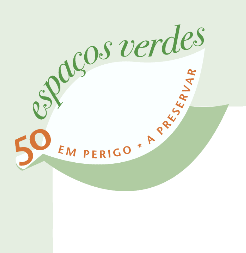Exposiçao retrospectiva da obra de Paula rego no Museo Nacional Centro de Arte Reina Sofía em Madrid. De 26-09-2007 a 30-12-2007
Texto do site oficial da exposição:
Paula Rego (Lisbon, 1935) is one of the leading figurative painters on the international scene. Her production is rooted in experiences and personal memories, dark fantasies, literature and art history. In the early 1950s she moved to England to study at the Slade School of Fine Art and London has been her home ever since.
During the ten years that have passed since her last retrospectives were organized in 1997 by the Tate Liverpool and the Centro Cultural Belém in Lisbon she has produced what is perhaps her most compelling art. This exhibition is therefore a complete reassessment of her work in all media —painting, prints, collage and drawing— which allows an in-depth exploration of the interrelationships between her means of expression as well as of her evolution. The visitor becomes immersed in the view of life (in all its poignant and tragicomic turbulence) that the artist offers, as if on a journey through the mind and the complexity of life’s experiences. Staunchly loyal to her experience of the world —inspired by the memories of her solitary but magical childhood in Portugal and the many roles she has assumed in later life (including those of lover, wife and mother), she has created an intensely moving, human art that probes the psychological ramifications of the rites of passage we are all subject to from birth to death. She is one of the few modern artists who has placed life itself at the centre of her work —as did Goya and Hogarth (forebears whom she has made reference to)— revealing both the best and the worst in the human condition. Oblivious to passing fashions, she achieved recognition only after she reached the age of fifty.
The exhibition offers the opportunity for an in-depth study of the high points of Rego’s artistic career through important groups of works from each period. The display begins with a Life Painting from 1954, when she was still studying at the Slade and continues on to the political paintings and collage (fuelled by the anger she felt towards the Salazar regime) from the 1950s and early 1960s executed almost in the manner of an interior monologue, in a very free style. Leaving aside the works from the late 1960s and 1970s —when she was bringing up her children, recovering from the loss of her father and caring for her husband, the painter Victor Willing, who was suffering from a serious disease, the story picks up again in the early 1980s with fluently-executed large-format works, painted in acrylic on paper, like Red Monkey Beats the Wife, 1981, in which animals remiscent of those in fairy stories re-enact human dramas by turns uproariously funny and deeply distressing. The major change that came about in her work in 1986 with the sequence of Girl and Dog images is illustrated by examples of the series itself and the important paintings that followed it like The Maids, 1987 (inspired by the Genet play), The Policeman’s Daughter, 1987, and The Family, 1988, all key works that contributed to confirming her reputation. In the final and most disturbing section of the exhibition are the large pastels for which perhaps she is now best-known, beginning with the Dog Woman series and including her highly regarded Dancing Ostriches from Disney’s ‘Fantasia’, 1995, works from The Sins of Father Amaro sequence, 1997-1998, pieces from the Abortion series 1998-1999, and major works from 2000-2003 based on various literary sources (including Charlotte Brontë’s Jane Eyre, Franz Kafka’s Metamorphosis, Hans Christian Andersen’s fairy tales and Martin McDonagh’s harrowing play Pillowman).
Woven into the chronological sequence of paintings will be a substantial number of prints, which have formed a considerable part of her production since the late 1980s, and a careful selection of the even more numerous drawings (many of which have never been exhibited) through which she plans her paintings and tests her visual ideas
paula rego na wikipedia : http://en.wikipedia.org/wiki/Paula_Rego






-3.jpg)


















0 comentários:
Enviar um comentário